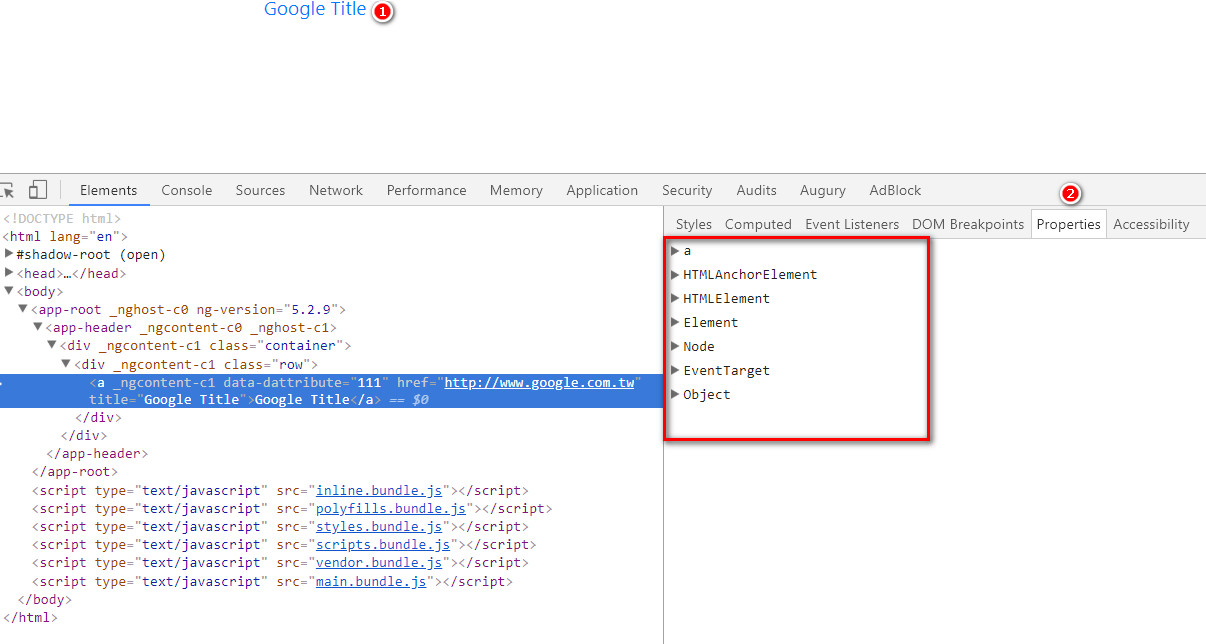Property Binding (屬性繫結)
[property] = 'statement'
Property Binding
在HTML的Property 加上中括號,後面給定義在component.ts的變數名稱,就可以實現property binding
例如在template:component.html 內
href 這一個 DOM的property 加上中括號
<a [href]="href">{{title}}</a>
在 component.ts 內定義 property: href
export class HeaderComponent implements OnInit {
title = '';
href = '';
constructor() {
this.title = 'Google Title';
this.href = 'http://www.google.com.tw';
}
ngOnInit() {}
}
即可完成Property Binding
Property 跟 Attribute 的不同
兩個都是翻成屬性,但是意義不同
Property => 意思是指這個 DOM 的Property,也就是Javascript的Property
要如何看這個DOM有哪些property,
F-12 打開檢查,點選要檢視的DOM物件,選擇右下角的頁籤Properties,
在不同的物件層級底下,可以看到這個DOM的Property
Property binding 真正的對象就是這個DOM 的 Property,而不是指HTML的Attribute
PS.在component.ts內自行定義的屬性(變數),也會稱為property

Attribute => 意思是指 HTML 的 Attribute(包含HTML5 提供的自訂擴充Attribute )
在HTML內如果要自訂擴充HTML Attribute,在HTML5是有明確定義的,
可以透過 data-Attribute,自由的擴充Attribute在標籤裡面
例如
<a [href]="href" [title]="title" [data-dattribute]="要擴充的值">{{title}}</a>
但是這樣自訂擴充的Attribute 是不能夠直接使用Property Binding ,
如果要動態的綁定自訂的HTML Attribute
在Angular裡面標準的作法是前面加上 attr.
[attr.data-dattribute]="title"
完整的component.ts
import { Component, OnInit } from '@angular/core';
@Component({
selector: 'app-header',
templateUrl: './header.component.html',
styleUrls: ['./header.component.css']
})
export class HeaderComponent implements OnInit {
title = '';
href = '';
constructor() {
this.title = 'Google Title';
this.href = 'http://www.google.com.tw';
}
ngOnInit() {}
}
完整的Template: component.html
<div class="container">
<div class="row">
<a [href]="href" [title]="title" [attr.data-dattribute]="title">{{title}}</a>
</div>
</div>
執行後,點選F12 ,可看到我自行擴充的HTML Attribute 已經動態綁定了ts定義的變數 title
